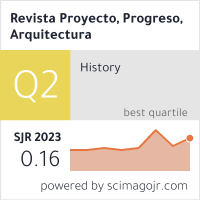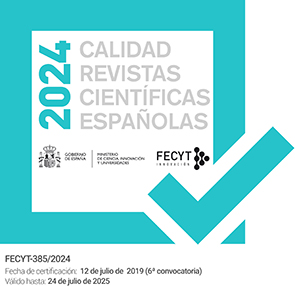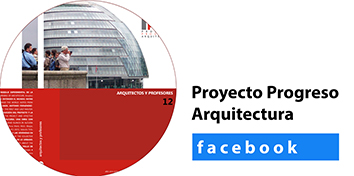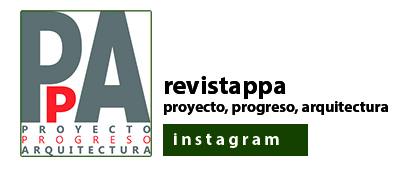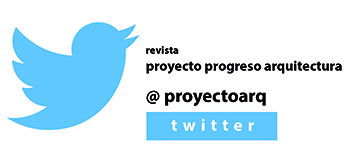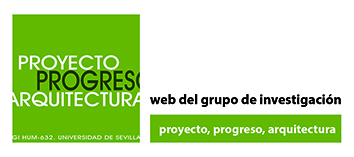EL MUSEO KOLUMBA: ELOGIO DE LA PIEZA AUSENTE / Kolumba Museum: in praise of the missing piece
DOI:
https://doi.org/10.12795/ppa.2010.i1.11Palavras-chave:
Kolumba, Zumthor, Schwarz, Colonia, reconstrucción, museo, Cologne, reconstruction, museum.Resumo
RESUMEN El presente artículo trata de profundizar, a través del estudio del museo Kolumba, en algunos condicionantes específicos que posee el proyecto que debe trabajar con arquitecturas del pasado, destacando entre ellos el modo en el que el objeto de partida queda incluido y contenido en el resultado final. La realidad última que el edificio construye, mediante la interpretación de lo preexistente, es el espacio invisible de la memoria (la pieza ausente). Las intervenciones llevadas a cabo a raíz de la destrucción de la iglesia de Santa Columba en la Segunda Guerra Mundial hasta la inauguración del presente museo nos permiten entender el proyecto de Zumthor como la culminación de una trayectoria iniciada años atrás por Rudolf Schwarz con la reconstrucción de Colonia. La sensibilidad y la convergencia interpretativa de los sucesivos autores que en este espacio intervienen originan una lectura conjunta que trasciende la personalidad individual de cada uno de ellos. Se tratará también en este artículo de la obra de tres artistas, presentes en el museo, especialmente vinculados a la memoria del sitio y de la destrucción desde ópticas y modos creativos diferentes: Ulrich Tillman, Bill Fontana y Richard Serra.
SUMMARY Through the study of the Kolumba Museum, the article attempts an in–depth study of some specific determinants that the plan must have in order to work with architectures from the past, emphasising the way in which the initial objective is encompassed in the final result. Through the interpretation of the pre–existing, the final reality that the building constructs is the invisible space of the memory (the missing piece). The interventions carried out as a result of the destruction of the church of Santa Columba in World War II until the inauguration of the present museum, allow us to understand Zumthor’s plan as the culmination of a process begun years ago by Rudolf Schwarz with the reconstruction of Cologne. The sensitivity and the interpretive convergence of the successive authors who intervened in this space resulted in a joint interpretation that transcends the individual personality of each of them. The work of three artists represented in the museum will be discussed. They are specially connected to the memory of the site and the destruction from different viewpoints and creative methods: Ulrich Tillman, Bill Fontana and Richard Serra.
Downloads
##plugins.generic.paperbuzz.metrics##
Referências
AA. VV.: Auswahl eins. Kolumba Kunsmuseum des Erzbistums Köln. Auswahlkatalog I. Colonia, 2007.
AA. VV.: Kolumba. Ein Architekturwettbewerb in Köln 1997, Erzbischöfliches Diözesanmuseum Köln. Colonia: Verlag der Buchhandlung Walter König Köln, 1997.
AA. VV.: Rudolf Schwarz. Colonia: Verlag der Buchhandlung Walter König, 1981.
A+U Architecture and Urbanism. Abril 2008. Tokio: A+U Publishing. 1974. Texto en japonés e inglés.
Alberti, L. B.: De re aedificatoria. Madrid: Akal, 1991.
Baglione, C.: “Il mondo sulla soglia. L’architectura sacra di Rudolf Schwarz”. En Casabella. 1996, Nº 640/641. Milá: Electa. 1928.
Baglione, C.: “Un museo per contemplare”. En Casabella. 2007, Nº 760. Milán:Electa. 1928.
Baumeister B11 2007.
Berlin, I.: El erizo y la zorra. Tolstoi y su visión de la historia. Barcelona: Ediciones Península, 2002.
Bulgarelli, M.: Leon Battista Alberti 1404–1472. Architettura e historia. Milan: Electa, 2008.
Delgado Orusco, E.: “Entre el suelo y el cielo. Notas para una cartografía de la arquitectura y el arte sacro contemporáneo”. En Aisthesis. Revista chilena de investigaciones estéticas. 2006, Nº 39. Chile: Instituto de Estética–Pontificia Universidad Católica de Chile. 2005. pp. 26-48.
Gros, P.: L’architecture romaine : du début du IIIe siècle av. J.–C. à la fin du Haut–Empire. 2, Maisons, palais, villas et tombeau. Paris: Picard, 2002.
Guardini, R.: El ocaso de la edad moderna. Un intento de orientación. Madrid: Ediciones Cristiandad, 1981.
Guardini, R.: Sobre la esencia de la obra de arte. Madrid: Ediciones Cristiandad, 1981.
Hasler, T.: Architektur als Ausdruck– Rudolf Schwarz. Zurich–Berlin: Gebr. Mann Verlag, 2000.
Krings, U.; Schwab, O.: Köln: Die Romanischen Kirchen. Die Romanischen Kirchen. Zerstörung und Wiederherhrstellung. Colonia: J.P. Bachen Verlag, 2007.
Levi, P.: Los hundidos y los salvados. 3ª ed. Barcelona: El Aleph, 2006.
Lieb, S.; Zimmermann, P. S.: Die Dynamik der 50er Jahre. Architektur und Städtebau in Köln. Petersberg: Michael Imhof Verlag, 2007.
Mantziaras, P.: “Rudolf Schwartz and the concept of city–landscape”. En AA. VV.: Actas del Congreso Internacional Arquitectura, Ciudad e ideología antiurbana. Pamplona 14–15 marzo 2002. Pamplona, 2002. pp. 15–37.
Margarit, J.: Nuevas cartas a un joven poeta. Barcelona: Barril Barral editores s.l., 2009.
Martí Arís, C.: Las variaciones de la identidad. Ensayo sobre el tipo en arquitectura. Barcelona: Serbal, 1993.
Masiero, R.: “Rudolf Schwarz: l’altra modernitá. Note di teologia politica sull’opera di Rudolf Schwarz” en Casabella nº 640/641.– Milán, 1996.
Müller, L.; Zumthor, P.: Peter Zumthor. Works, Buildings and Projects 1979–1997. Basilea–Boston–Berlín: Birkhäuser Verlag AG, 1999.
Navarro, V.: La máscara edificada. La catedral de Siracusa, Alberti en Rímini y Zumthor en Colonia. La interpretación del pasado a través de la envolvente. Director: Julián Sobrino. Universidad de Sevilla, 2008.
Pehnt, W.; Strol, H.: Rudolf Schwarz 1897–1961. Milán: Electa, 2000.
Pehnt, W.: "La luce nell’oscurità. Mies van der Rohe e Rudolf Schwarz". En Casabella. 1996, Nº 640/641. Milán: Electa. 1928.
Pehnt, W.: Gottfried Böhm. Basilea: Birkhäuser, 1999.
"Peter Zumthor". A+U Architecture and Urbanism. Febrero 1998. Tokio: A+U Publishing. 1974. Texto en japonés e inglés.
Schwarz, R.: “Sacralitá e arte del construire”. En Casabella. 1996, Nº 640/641. Milán: Electa. 1928.
Steiner, G.: La idea de Europa. 2ª ed. Madrid: Ediciones Siruela, 2007.
Toynbee, J. M. C.: Death and burial in the Roman world. London: Thames & Hudson, 1971.
Winnekes, K.: Richard Serra. The Drowned and the Saved (Die Untergegangenen und die Geretteten, 1992).– Essen, 1997.
Zumthor, Peter: “Arte sagrado. Museo Kolumba en Colonia, Alemania”. En Arquitectura Viva. 2007, Nº 116. Madrid: Arquitectura Viva SL. 1988. pp. 38-45.
Zumthor, P.: Atmósferas. Barcelona: Gustavo Gili, 2006.
Zumthor, P.: Pensar la arquitectura. Barcelona: Gustavo Gili, 2005.
Downloads
Publicado
Como Citar
Edição
Seção
Licença
Las ediciones impresa y electrónica de esta Revista son editadas por el Secretariado de Publicaciones de la Universidad de Sevilla, siendo necesario citar la procedencia en cualquier reproducción parcial o total.
Salvo indicación contraria, todos los contenidos de la edición electrónica se distribuyen bajo una licencia de uso y distribución “Creative Commons Atribución-NoComercial-SinDerivar 4.0 Internacional” ![]() . Puede consultar desde aquí la versión informativa y el texto legal de la licencia. Esta circunstancia ha de hacerse constar expresamente de esta forma cuando sea necesario.
. Puede consultar desde aquí la versión informativa y el texto legal de la licencia. Esta circunstancia ha de hacerse constar expresamente de esta forma cuando sea necesario.
Los autores/as que publiquen en esta revista aceptan las siguientes condiciones:
- Los autores/as conservan los derechos de autor y ceden a la revista el derecho de la primera publicación, con el trabajo registrado con la licencia de atribución de Creative Commons, que permite a terceros utilizar lo publicado siempre que mencionen la autoría del trabajo y a la primera publicación en esta revista.
- Los autores/as pueden realizar otros acuerdos contractuales independientes y adicionales para la distribución no exclusiva de la versión del artículo publicado en esta revista (p. ej., incluirlo en un repositorio institucional o publicarlo en un libro) siempre que indiquen claramente que el trabajo se publicó por primera vez en esta revista.
- Se permite y recomienda a los autores/as a publicar su trabajo en Internet (por ejemplo en páginas institucionales o personales) antes y durante el proceso de revisión y publicación, ya que puede conducir a intercambios productivos y a una mayor y más rápida difusión del trabajo publicado (vea The Effect of Open Access).
- Resumo 641
- ARTÍCULO (Español (España)) 480





